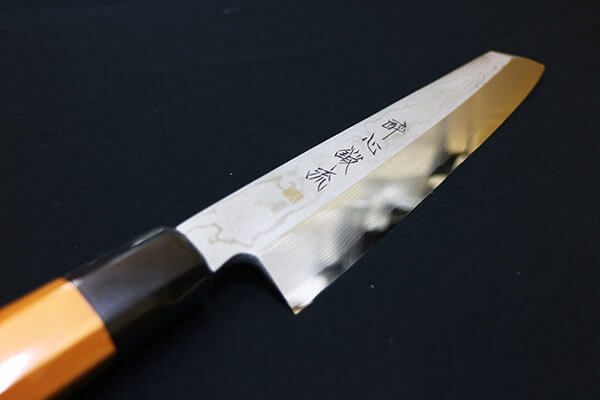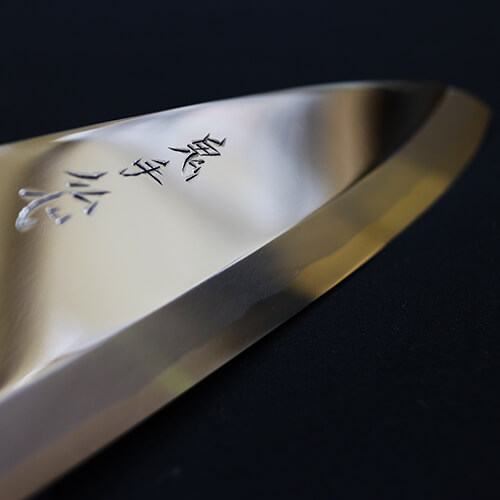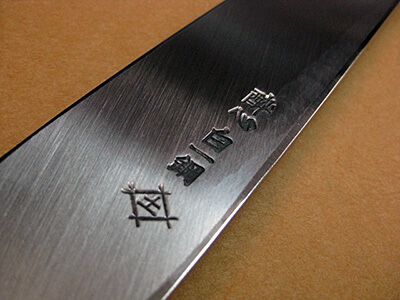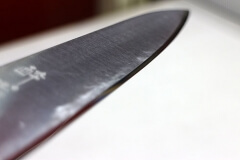Difficulty in sharpening
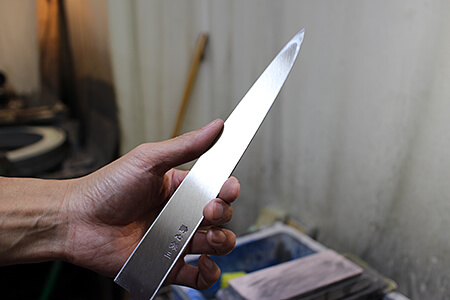
When you sharpen it thin to achieve an ultra-sharp edge, you get that ‘kiki’ sensation as it cuts, like a ‘kiki-kiki’ sound. It’s not the coarseness of the edge (serrations due to the roughness of the whetstone) but the sharpness from thinness that gives this biting sensation.
If you want just this sharp edge that bites into your nail, you can achieve it by sharpening right up to the limit of the steel’s performance, even dry nails will produce that ‘kiki-kiki’ sensation when pressed. If you master using Itohiki well, you can achieve this without thinning the blade. Even without thinning the blade, you can achieve that ‘kiki-kiki’ sensation using this method!
With this approach, even common household Santoku knives, which are generally mass-produced, can produce the biting sensation you’d get from thinning. *Generally, the type of steel used for the blade and its compatibility with the whetstone also matter. Depending on your sharpening skills, you can achieve a nice biting edge.
The effort to achieve that edge and its durability is unknown for now 😉 (I believe good steel is easier to sharpen and leans towards durability.) I’ll leave that aside for now. If you believe that with both Japanese and Western knives, you can only achieve that biting edge if you thin them, it might be worth tweaking your sharpening a bit. In an ultimate scenario!
Although you can’t fully replicate that perfect biting sensation achieved by thinning, I think with a thinner edge, you’ll have better edge retention and find future sharpening easier! However, experiencing that sensation might make even a slight thinning with Itohiki feel like it doesn’t cut (strictly speaking, doesn’t bite), making it somewhat uncomfortable. It’s all a matter of preference, so I can only say, ‘That’s how I feel’ 😉
The key to achieving the ‘kiki-kiki’ with Itohiki lies in the relationship between the steel and the angle of Itohiki + compatibility with the whetstone. A good example is a utility knife’s edge! The angle between the steel and that double-edged angle is calculated nicely. If the steel is consistently stable, sharpening at the calculated angle should give you excellent sharpness for everything!
Also, it depends on the compatibility with the whetstone! So, it might be good to explore the angle that suits your blade steel. 😉
Hibishugyo
- 2010-07-28
